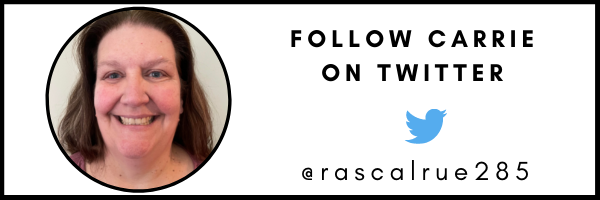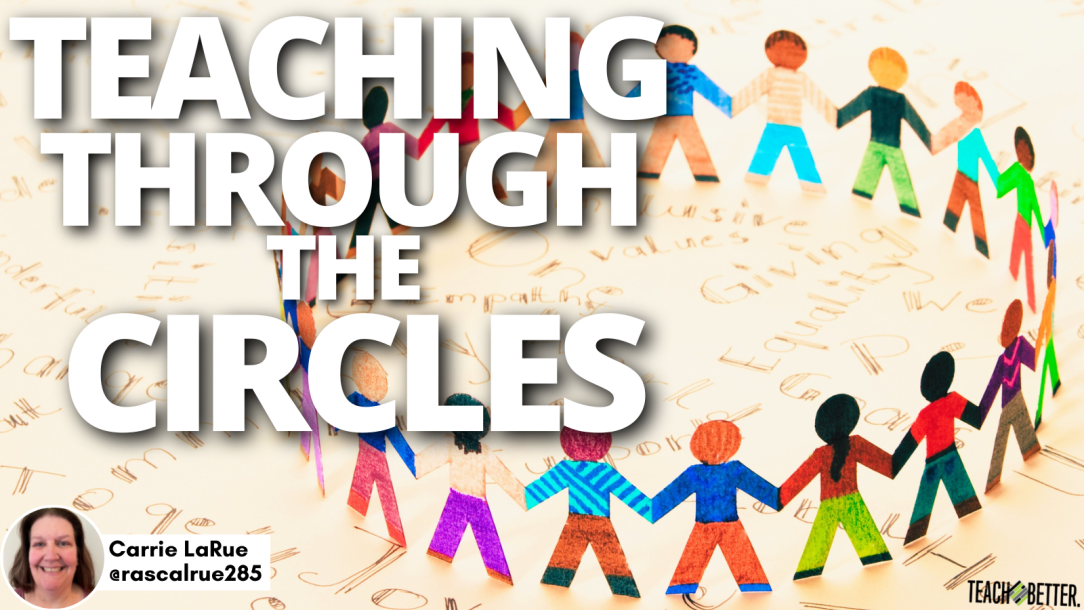TL;DR:
- A great idea can be transferred to many different applications.
- Don’t be afraid to put your spin on a great idea.
- Give credit where credit is due.
Teach Better Team
I am honored to be part of an incredible community of teachers through the Teach Better team, my own district, and several teaching groups via social media. A little over a year ago, on Teacher2Teacher, an educator I respect posted a blog on Comfort Zones.
Livia Chan wrote about comfort zones, stretch zones, and the beyond—the things we can’t do OR tell ourselves we can’t do yet. She has her students complete this with events/experiences from their daily lives. I absolutely loved the idea, and I mulled it around in my head. I teach 8th graders; Livia has upper elementary. My students are too cool (they think) for some of the social-emotional learning activities I try to provide. I wanted this to be something they gave thought to and took seriously.
The preview of standards was a huge benefit to my students. Knowing what they would encounter in the classroom was a stress relief for some students. Click To TweetStandards-Based Influence
My district is standards-based. Each grade level has chosen 10-12 content standard components for which we guarantee mastery plus numerous “good-to-know” standard components. While our guaranteed standards are fairly narrow, the good-to-know standards broaden them significantly. And while it might look like 6th, 7th, and 8th grade all chose the same standard, the work involved to master the grade-level requirement changes significantly.
The Circles
Taking that info, I made a list of the guaranteed standards and several good-to-know components (that list changes with our students’ prior knowledge and needs). Then, I put that information on slides I could later share with students. I presented these very early in the year. Before students saw them, they drew concentric circles on a sheet of printer paper. I asked them to not make one circle significantly smaller (1st hour had drawn the inside circle tiny). While viewing the slides, students had time to discuss and ask me questions. I highlighted the skills they would need to master. Additionally, I talked about tasks/activities we would do with each standard.
Then, I had students write where they believed they were on those skills covered under the larger umbrella. If they believed, for example, that they could take an assessment right then and master all of the skills for theme, they put it in their comfort zone circle. On the other hand, if they thought they could do most but maybe not how a character changes, it went into the stretch zone. If they were totally lost, it was in the outer circle.
It took us a couple of days to get through this activity (we have 45 minutes classes and I’m not a sparse talker). The discussion also provided me with a way to begin making relationships, as I discussed areas where I had struggled as a learner and as a teacher.
[scroll down to keep reading]
What did we do with these?
Many beginning-of-the-year activities get put into a folder and forgotten. I’m guilty of that. I didn’t want students to feel as if their time had been wasted.
I reviewed each student’s circle, taking notes and putting questions on sticky notes for them to consider or to respond to me. Again, this opened the conversation and relationship-building with each student. (It is simply amazing to let a student know they struggle with something you did, and you might have some strategies that could help them.)
Throughout the school year, we pulled these circles out and discussed their progress on the standards we’d completed. They highlighted and drew arrows. Some moved from stretch into comfort. Others moved from beyond into stretch. I was thankful for the ones who noted they moved from comfort into stretch because it showed their honesty, bravery, and their metacognition.
Previewing the Standards: Benefits
The preview of standards was a huge benefit to my students. Knowing what they would encounter in the classroom was a stress relief for some students. Seeing my passion and hearing me talk about these standards took away some of the drudgery. It also gave students a chance to interact with me, figure out who I am just a bit, and let me tell stories of my past learning and past student experiences.
It created talking points for parent and admin communication. Clarifying these standards and good-to-know points made emails home (which I also send to building and district admin) more succinct. Doing this helped me think through what’s good to know at the 8th-grade level.
Be sure, though…
In each conversation about these circles, I gave credit to Livia Chan. I talked about how I took her idea and morphed it into what I envisioned. I also reached out to Livia and asked her permission to change this activity. She’s a gracious person and immediately supported my idea, even asking me to let her know how it went.
We are a community of teachers. It isn’t wrong to borrow an idea; it is wrong to not give credit. I hope you take this and make it your own!
About Carrie LaRue
Carrie LaRue is a second-career teacher at Royster Middle School in Southeast Kansas, where she has the privilege of instructing 8th graders in reading and writing. After a short stint in journalism, she returned to college to earn a certification in education and went on to earn a Master’s in Literacy from the University of Missouri. She is passionate about creating strong relationships with students (#reachbeforeteach) and their families. Her students know she loves to read, cook, travel, and do counted cross-stitch when she isn’t teaching them. 


